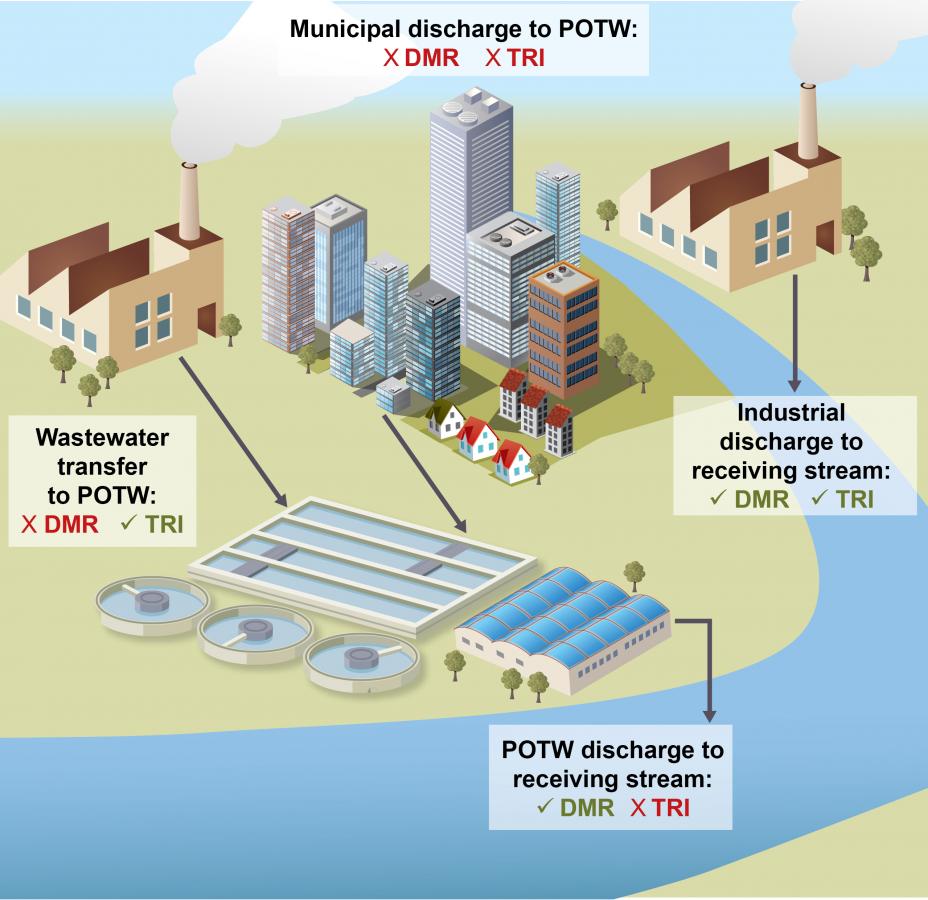2013 TRI National Analysis: TRI & Beyond - Regulating Chemical Releases to Water
Section 2: Regulating Chemical Releases to Water
EPA collects data on pollutant releases to water under the authority of the National Pollutant Discharge Elimination System (NPDES). The NPDES program aims to protect and restore the quality of U.S. rivers, lakes, and coastal waters through permits that control and require monitoring of pollutant discharges from point sources. Under the Clean Water Act (CWA), facilities are required to obtain a NPDES permit for all point sources that discharge pollutants into waters of the United States and report compliance with permit limits via monthly Discharge Monitoring Reports (DMRs).
Through the DMRs submitted, the NPDES program collects data for the facility-specific parameters identified in the facility’s NPDES permit. The DMR data may include release quantities of specific chemicals as well as other water quality measures, such as pH and temperature, flow rates, and conventional parameters such as biochemical oxygen demand and total suspended solids. Along with TRI data about toxic chemical releases to water, DMRs serve as a primary source of data on pollutant discharges to surface water.
This figure illustrates the types of wastewater streams that the TRI Program and DMR data describe.

TRI data capture discharges to receiving streams and chemical transfers to Publically Owned Treatment Works (POTWs) from industrial facilities. DMR data capture discharges to receiving streams by both industrial facilities and POTWs, but do not capture transfers from an industrial facility to a POTW. Neither data set captures municipal discharges to POTWs.
This page was published in January 2015 and uses the 2013 TRI National Analysis dataset made public in TRI Explorer in October 2014.
